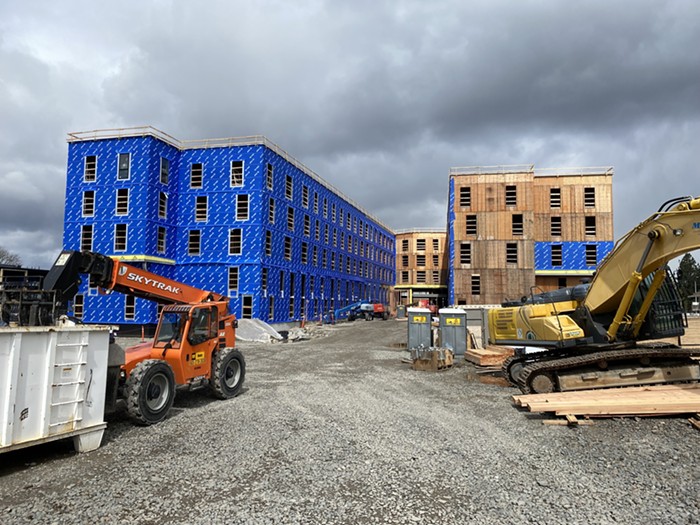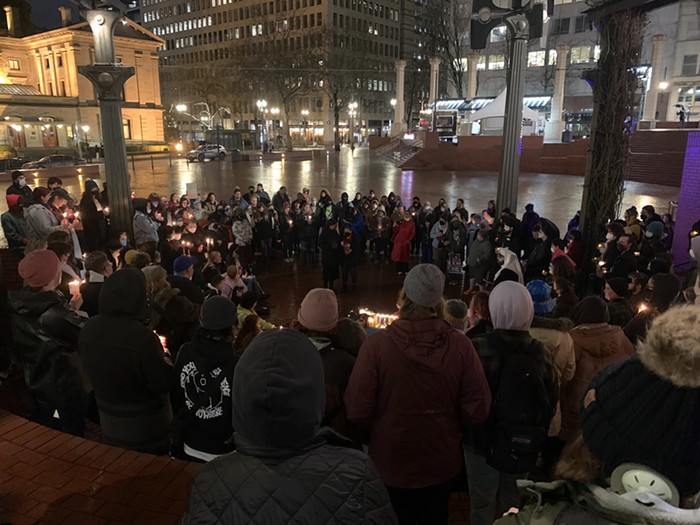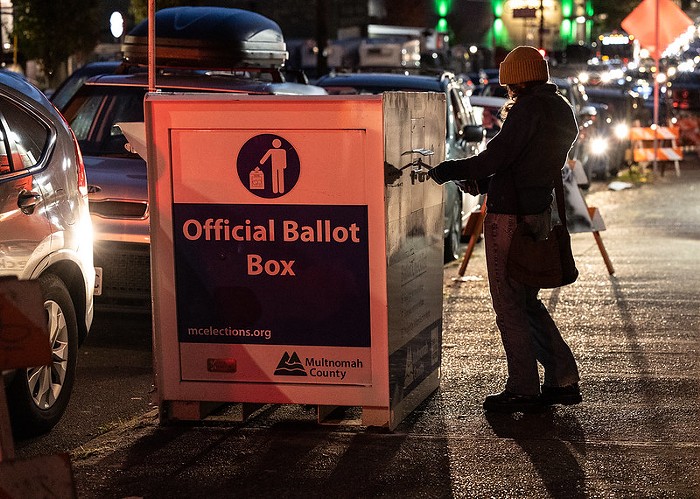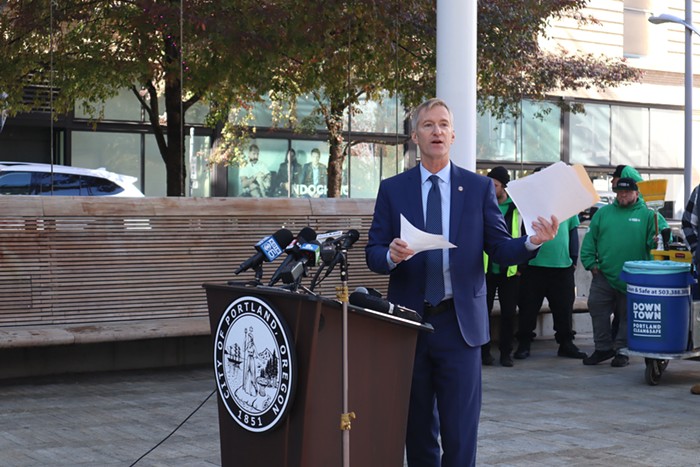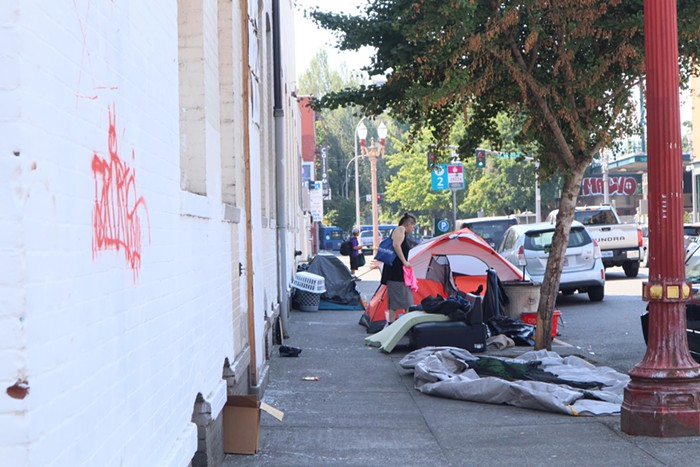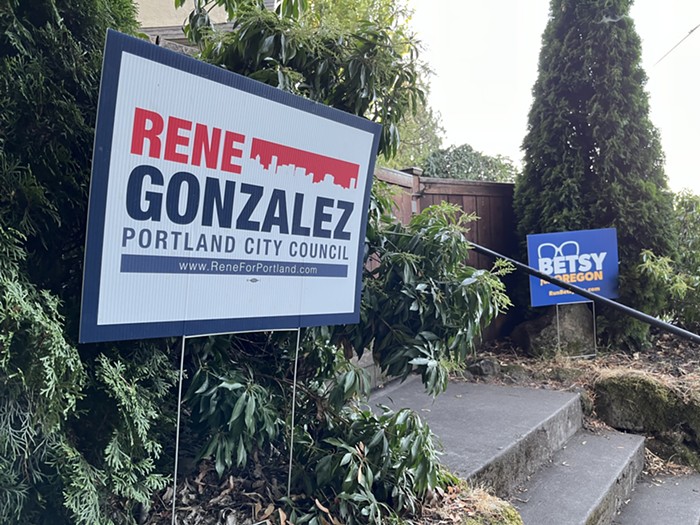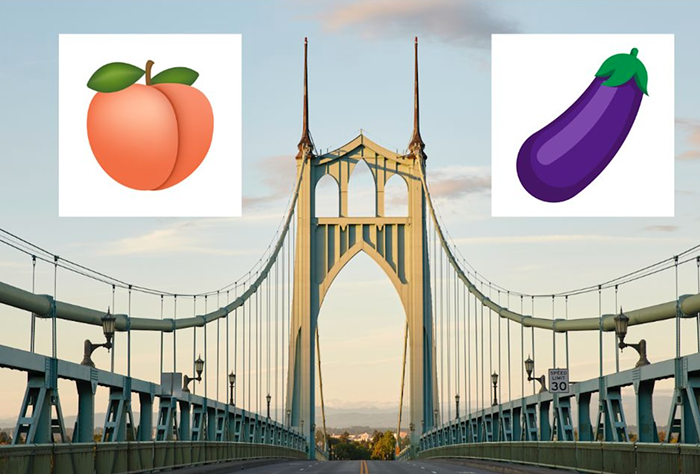PARENTS WALKING their young children to Southeast Portland’s New Day School have had a confusing month.
After years of crossing a barren Clinton Street, they showed up on the morning of September 12 to find a marked crosswalk where Southeast 19th dead ends into Clinton—the very spot where the preschool sits.
If they were observant, the parents noticed this wasn’t like other crosswalks around town. Rather than the specialized plastic that the Portland Bureau of Transportation (PBOT) favors, the new markings were made of durable reflective tape.
“Very expensive,” says one of the people who installed the crosswalk.
That crosswalk we did yesterday? The one the cops DIDN'T interrupt? It's looking goooood. pic.twitter.com/OBuLGiHXhp
— PDX Transformation (@PBOTrans) September 13, 2016
In today’s Portland, where tactical urbanists have taken to erecting rogue speed signs and dropping unsanctioned cones to warn cars away from bike lanes, it won’t surprise you to know he’s not a city employee. PDX Transformation, a contingent of anonymous street safety advocates who have been active since late last year, installed the crosswalk.
Now, as the city mulls over a new plan designed to eliminate serious traffic injuries and deaths by 2025, the Clinton street intersection has become something of a battleground.
As quickly as the crosswalk appeared, it vanished. PBOT crews moved in late September to remove the reflective tape.
Hours later, PDX Transformation volunteers were back at the intersection, detouring vehicles while they installed a new marked crosswalk—this time with paint. The city has since sent crews to remove that one, too.
PDX wants their crosswalks. If you want to foil our plans, we will paint over yours. pic.twitter.com/sgcKi2qAlZ
— PDX Transformation (@PBOTrans) September 30, 2016
“It was so insulting,” says a leader of PDX Transformation, requesting anonymity because his activism could lead to legal consequences. “Everyone found it so useful. It wasn’t doing any harm at all.”
The intersection is already technically a crosswalk. Under Oregon law, all intersections are. Drivers (and cyclists) are required to yield as soon as “any part of the pedestrian’s body, wheelchair, cane, crutch or bicycle, moves onto the roadway in a crosswalk...”
But that wasn’t happening without paint or tape, according to staff at the New Day School. Actually marking a crosswalk can make a big difference.
“I got a lot of comments from parents who were so thrilled to have it there,” says Wendy Rattel, office manager at the preschool and child care center, which serves kids ranging from 2.5 to 5 years old. “They felt when they would step out in the crosswalk that traffic would actually stop. When it wasn’t present, neither bikes nor vehicles would stop for them.”
Surprised and saddened to find that our fabulous new #crosswalk on #clintongreenway was removed! Nobody stopped for us on our #WalkToSchool pic.twitter.com/LpFr7aYy3w
— Kari Schlosshauer (@galavantista) October 5, 2016
But the city says the activist crosswalk was potentially hazardous. PBOT, which has bemoaned dwindling resources to complete road maintenance and safety improvements in recent years, says it was necessary to remove the markings for safety and liability reasons.
“Drivers do not always respect marked crosswalks,” says Steve Novick, the city’s transportation commissioner. “They can create a false sense of security and lead to more crashes.”
Under PBOT’s evaluation guidelines for crosswalks, this stretch of Clinton won’t potentially qualify for city-sanctioned crosswalk markings until it sees average vehicle traffic of more than 4,000 cars per day (though there’s an exception for some school crossings). According to BikePortland.org, which first reported on this fight, the city carried out an analysis of SE Clinton and 19th a year ago that found the intersection wasn’t eligible.
“If we were to let one of these non-standard crosswalks stay permanently and a crash occurred at the location, the city would be potentially liable,” PBOT spokesperson John Brady told the website. Brady hadn’t responded to a list of questions from the Mercury as of press time.
But in fact, the city has already allowed some “non-standard” crosswalks to remain for more than a month. In the wake of the death of 15-year-old Fallon Smart on Southeast Hawthorne in August, a number of rogue crossings appeared in the roadway—including one, at Southeast 44th, that PDX Transformation takes credit for.
The group’s markings are still there today.
Brady says that’s because PBOT Director Leah Treat has promised the community she wouldn’t alter the roadway until a traffic study is complete. “So in that respect, the final status of that crosswalk hasn’t been decided,” Brady says.
The timing of this crosswalk tug-of-war is either ironic or fortuitous. More than a year after voting to adopt “Vision Zero”—a commitment to limiting severe traffic injuries and deaths—the city’s getting ready to consider a strategy for enacting the policy on Wednesday, October 12.
That plan runs more than 40 pages, and raises big concerns about Portland’s record of protecting pedestrians.
“While the overall number of traffic deaths in Portland has dropped over the past 20 years,” it notes, “the percentage of bicycle deaths has held steady and the percentage of pedestrian deaths has continued to rise.”
That’s the trend PDX Transformation says it’s fighting against. The group acknowledges that Clinton and 19th isn’t remotely the most dangerous intersection in Portland, but it’s planning to make a stand there nonetheless.
And it wants to do so with the city’s blessing. To quell officials’ concerns, the group has offered to install a crosswalk to the city’s exact specifications, and using the same “thermoplastic” PBOT uses—all for free. There’s even a GoFundMe campaign to pay for the effort.
The city hasn’t responded to the offer, PDX Transformation says. Asked how the group will proceed, its founder balks.
“It’s one of those things that we don’t necessarily want to tip off the city to what our plans are,” he says. “We’re capable of striking at any time, day or night.”
